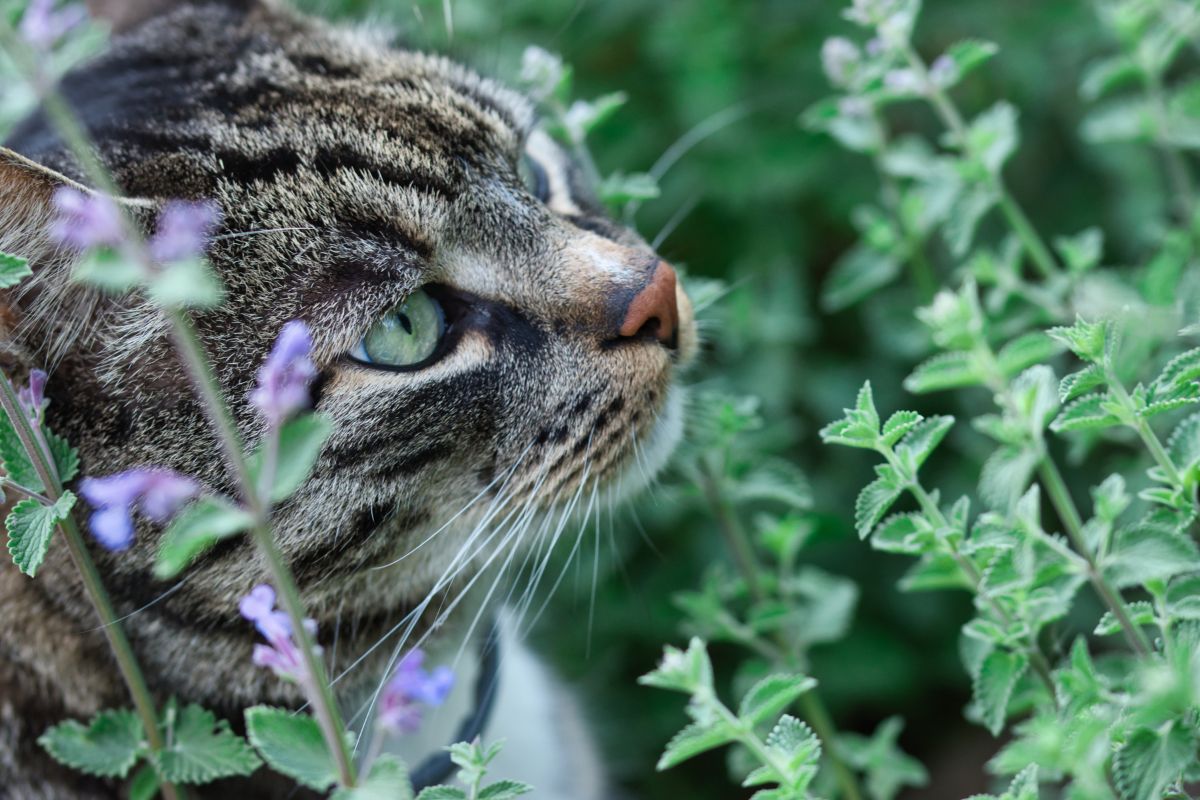Cats are famously carnivorous, with even the most pampered and well-fed domestic moggie capable of terrorising the local bird and rodent populations. But although meat might be the mainstay of a cat's diet, most felines are also partial to at least a little greenery on the side.
Eating grass and other plants is a normal part of a cat's diet, and it's thought that the added dietary variety brings several benefits. Some nutrients and vitamins are abundant in plants but relatively scarce in meat, and your cat could be instinctively seeking these out to provide a more balanced diet.
Many cats throw grass straight back up after eating it, and it’s possible that this can help deal with hairballs and even worms or other digestive parasites. And lastly, eating grass and other greenery could simply be a form of entertainment, making a change from a domestic cat's steady supply of effort-free meals.
Whatever the reason for cats enjoying a veggie side dish, providing a ready supply of edible greenery is an important part of feline welfare, especially for indoor cats who can't access a natural source of plant material. There are several species you can grow which seem to have a particular attraction to felines, along with a few that should definitely be avoided to protect your cat's health.
Three Purrfect Herbs for Cats
Although cats will happily chow down on ordinary grass, three herbs make a particularly good foundation for a feline salad bowl.
1. Cat Grass
Several plant species are commonly known as cat grass, all of them providing a similar taste and texture that seems to push the right feline buttons. There are four main types available:
- Cat Grass (Dactylis glomerata): A tough grass variety that's great for chewing on and a fast indoor grower in pots or trays. If growing indoors, make sure to position trays or pots in good light and to protect them from curious kitties until the plants are large enough to withstand a little chewing. This species can potentially be invasive if grown in the open soil, so planting in pots is recommended.
- Barley (Hordeum vulgare): Packed with nutrients to benefit your cat's health.
- Wheatgrass (Triticum aestivum): Also called common wheat, and a good all-round cat grass that's a rich source of fibre.
- Oat Grass (Avena sativa): Combining plenty of flavour with high levels of both protein and fibre.
2. Catnip
Catnip, or Nepeta cataria, is a notorious feline stimulant that can leave some cats in raptures while others are apparently unaffected. A member of the mint family, it's easy to grow either in full or part shade. If you make it a feature of your herb garden you can expect to attract plenty of locals looking for some rowdy recreation.
For more information on catnip, including its culinary and medicinal uses for people, read our full article here.
3. Catmint
Catmint, or Nepeta mussinii, is closely related to catnip but has only a little of its cousin's stimulant value. And while this might make it a bit less attractive to hedonistic felines, catmint has the human advantage of being highly decorative, with lavender-blue flowers and striking grey-green foliage. It's worth a place in your garden for these ornamental looks alone.
Other Herby Feline Favourites
While cat grass, catnip and catmint are the mainstays of a feline's herb repertoire, several other plants are welcome additions to the buffet table:
- Valerian (Valeriana officinalis), another plant with a mild stimulant action on felines but soothing qualities for their humans.
- Liquorice root (Glycyrrhiza glabra), which is thought to relieve digestive upsets and soothe respiratory issues.
Three Plants to Definitely Avoid
There are some plants that cat owners should be very cautious about adding to their gardens. Many species are mildly toxic for cats, usually causing a passing tummy upset at worst, but three plants in particular are potentially feline-fatal if ingested.
While most cats will tend to instinctively avoid these dangerous species, the old saying about cats and curiosity means these plants should be kept well away from any bored or housebound moggie with plenty of time on its paws.
- Lily: Many types of lily are highly toxic to cats, with effects ranging from vomiting right up to kidney failure. Even worse, the toxins are also present in lily pollen, and cats can receive a dangerous dose just by grooming themselves after pushing through a patch of flowering plants.
- Tulip and daffodil: These species are both toxic to cats and can trigger stomach upsets, or in more serious cases, potentially fatal cardiac and respiratory problems. This makes sense if you consider that tulips are members of the lily family and daffodils belong to the closely related Amaryllis family. The highest concentration of toxins is in the bulbs.
- Chrysanthemum: Flowers contain pyrethrins, natural pesticides that are also poisonous for cats, dogs and horses among other animals. Symptoms include vomiting, diarrhoea, hyper-salivation and disorientation.
Among all the household pets, cats are perhaps the least likely to adopt a fully plant-based diet. But making a few feline-friendly herbs available will give your favourite furball extra dietary options to improve their health, happiness and overall well-being.









